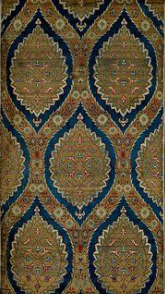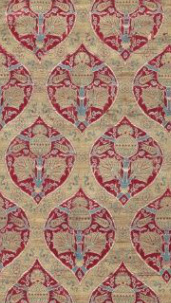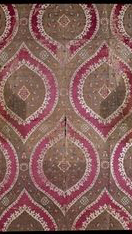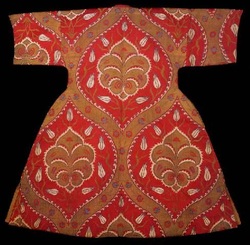
The simplicity of the Ogee motif inspired our ever-popular Juhu pattern. We created original artwork and interpreted it as a textile with a layered dimension of an ogee block print outlined by embroidery. We later added a printed wallcovering version, too.
The term ogee comes from the French word ogive which means pointed arch. Ogee patterning originated in Persia, coming from the tomb of Cyrus the Great (circa 576–530 BCE), who founded the Persian Empire. It comprises two arcs that flow in opposite directions, similar to an S-shaped (sigmoid) curve. Ogee arch patterning began in the Middle East but is a significant component of English Gothic and Venetian Gothic architecture dating to the thirteenth century.

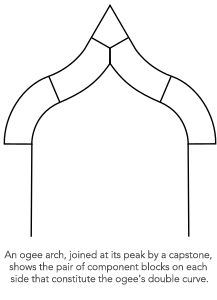
The main characteristics of an ogee are:
First seen in textiles and transferred to cloth in the 12th century, the ogee forms a graceful eye-shaped oval that narrows at each end to a point and then opens into the repeat pattern in a sinuous rhythm of S-shaped waves. Ogival patterns often appeared in 16th-century Turkish, Persian, and Italian silk brocades. When designed for larger-scale, more elaborate home-furnishing fabrics, they tend to reflect their Middle Eastern or Renaissance roots.
